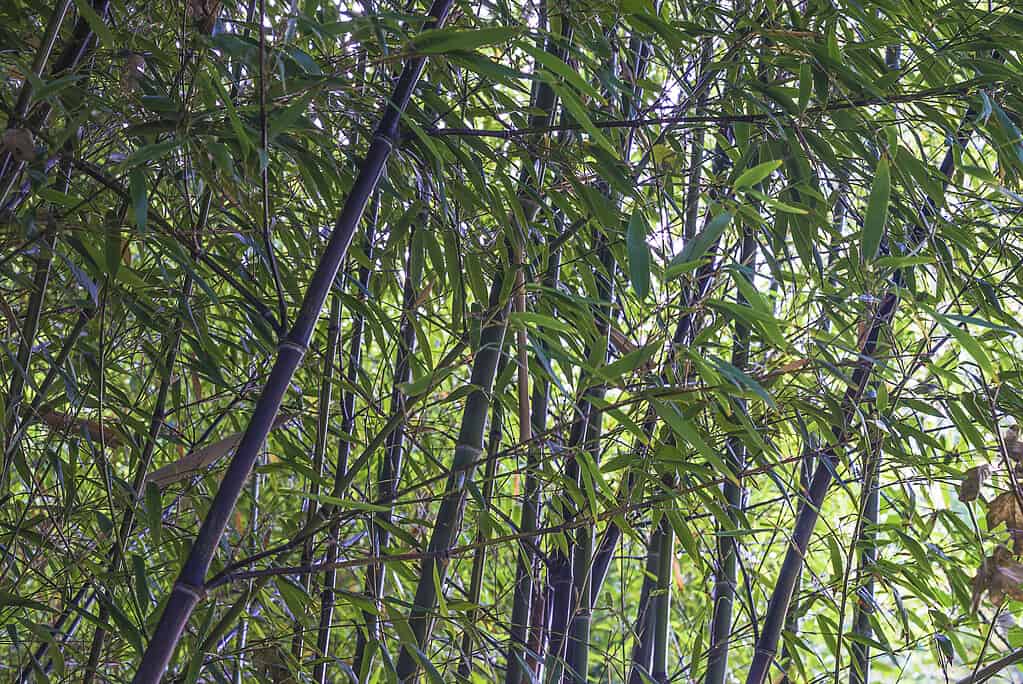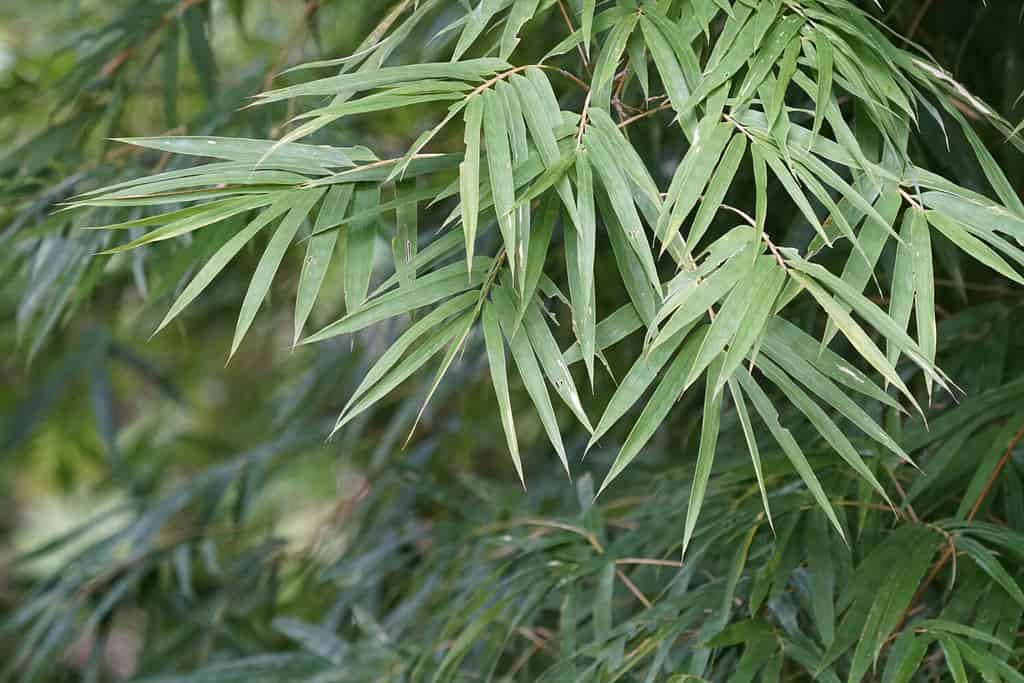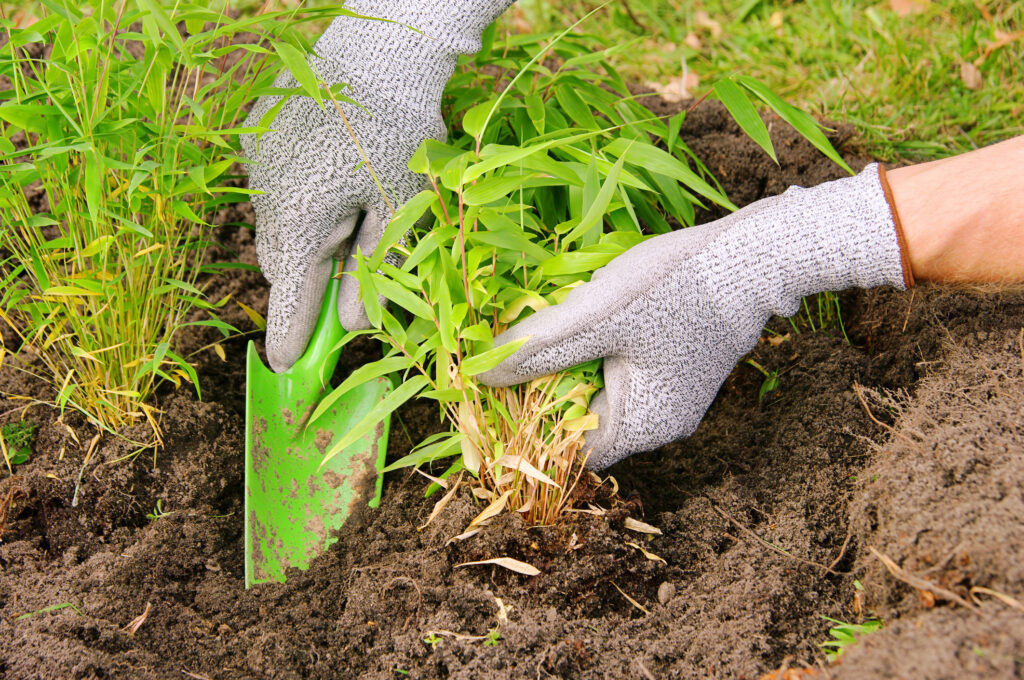Bamboo has taken the world by storm over the last few decades. It is highly versatile and has played an important role across the globe over the last few centuries. While bamboo is often depicted hand and hand with giant pandas, many species will happily grow in varying climates. Below, we will look into this plant and whether it can get grown in North Carolina.
| Plant Family | Poaceae (grass) |
| Common Name(s) | Bamboo |
| Native Region(s) | Asia, Australia, India, Himalayas |
| Life Cycle | Perennial |
| USDA Hardiness Zone | Varies; 5-11 depending on species |
| Stem | Hollow |
| Height | Varies by species |
| Years to Maturity | Five to Six |
Bamboo is a large group of evergreen perennial grasses. There are a huge number of species in the broader family. The most well-known are the giant bamboo. However, there are even some smaller species that are perfectly suited for the home gardener.
Bamboo is prized for its beauty, strength, and flexibility. Many cultures have traditionally turned to it as an answer to most of their needs. Young bamboo shoots are a delicious addition to meals. And the sap can get turned into wine. But the benefits don’t stop there.
Throughout history, bamboo has been turned into dishes, fabric, cookware, construction materials, and writing instruments. These fast-growing plants are eco-friendly, renewable, and sustainable. They require few resources to thrive. It is also extremely durable, making the wood an ideal choice for any application you would turn to standard wood products to solve.

Stems of black bamboo or
Phyllostachysgrow together in tight, attractive clusters.
©iStock.com/stsvirkun
Growing Bamboo in North Carolina
North Carolina offers a nearly ideal environment for bamboo. That is welcome news for gardeners interested in planting some of their own. However, that news comes hand and hand with a note of caution. Bamboo loves the area so much that it spreads rapidly and will quickly take over. So controlling it when planted outdoors in North Carolina is critical.
What Bamboo Species Grow in North Carolina?
Most bamboo species will grow happily in North Carolina. But there is one species that is particularly common – Phyllostachys aurea. Unfortunately, this running bamboo is highly invasive, so most agencies strongly recommend against planting it. There is also a native running bamboo species (Arundinaria gigantea) that also appears to have the same problem.
So many local experts recommend turning to clumping bamboo as an alternative. The only problem with this is that most clumping varieties cannot handle the weather fluctuations that North Carolina experiences. One recommendation is to turn to the Bambusa multiplex, which has multiple cultivars suited for the North Carolinian climate.
Researching the different species within the Bambusa multiplex before adding bamboo to your garden or lawn will help make your decision easier. That way, you can find one that won’t take off into your neighbor’s yard but will still survive the cold winters and hot summers.

Bamboo that clusters is a better option for North Carolina since it doesn’t spread as rapidly.
©Doikanoy/Shutterstock.com
Caring for Bamboo
Finding a bamboo species that can thrive in North Carolina is only the first step. The most important part is providing proper care for your new plant.
Find a suitable spot in your yard or garden for your new bamboo. If you want to create a screen with them, plant the starts with 3 to 5 feet in between. Planting them closer (or further) together won’t damage your plants. But it will hinder growth slightly.
Don’t start planting yet, however. First, you will want to consider a few other things. Will the area you choose be easy to get to for weeding? Bamboo does not like competing with excess weeds for nutrition. And how much sun does the area receive? Bamboo needs five or six hours of quality, direct sunlight to thrive.
Soil
Bamboo requires highly-quality, nutrient-rich soil. Compost is an excellent addition. And most bamboo species love moderately acidic loamy soil that is kept moist. To accomplish this, add a thick layer of mulch at the base of the plant. You can also leave any leaves that fall onto the ground. The organic material will decompose and add more nutrients. They will also help the soil retain moisture.
Water
Water your new bamboo plants regularly. Multiple watering days during the height of the growing season are ideal. However, the plants don’t need that much water in the winter, so you can cut back. Established bamboo plants can handle extra water fairly well, but young plants cannot. So avoid overwatering if possible.

Before planting bamboo, decide what you want to grow and understand its care needs.
©iStock.com/LianeM
Growing Bamboo in Containers
If you don’t have space in your yard for bamboo or don’t want to plant it outside, don’t worry. One can grow bamboo in North Carolina by planting it in a container. That’s fantastic news for anyone living in a smaller space. Follow the same watering and soil requirements listed above for outdoor plants. Plus, you will want to keep reading for a few additional tips.
- Bamboo does best when it gets repotted every 5 to 10 years.
- Regular fertilization in the summer is vital.
- Keep a close eye on the soil’s moisture level to prevent dehydration.

Many bamboo species grow well in containers.
©96 Creative Graphics/Shutterstock.com
Thank you for reading! Have some feedback for us? Contact the AZ Animals editorial team.








